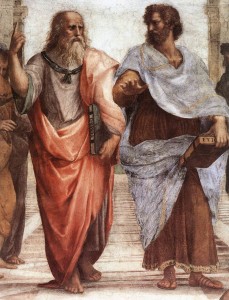UELO: Students will use critical, creative, and collaborative thinking to solve problems and achieve common goals.
Principles
- Collaborative thinking is more of a practice than thinking.
- Critical and creative are different styles of thinking.
- Problem-solving is the end goal.
- Teamwork is an important skills that employers want.
- Interested in producing students who can self-discover roles. That they have the agency they need to understand how to build the roles themselves.
- Collaboration: how you work with community groups is also important
- Importance of solving unscripted problems.
- Goal-setting as another important skill.
- Interested in not just problem-solving but also problem-finding, which ties into student-agency.
- Finding a problem helps prompt creativity.
- These are not one and done; it has to be repeated over and over again; importance of breadth; not siloed.
Concerns and Needs
We need to give students methods for how to collaborate, and we need to scaffold this. We’re never taught; we are told to collaborate and that collaboration is good.
- Can we rethink the term collaborative thinking? maybe collaborative practices?
- Should they be challenged to not play to their strengths?
- Collaborative projects take a lot of time; critical thinking also takes time.
- These practices have to be unbundled to measure them.
- Team-teaching would require training and resources.
Capstone students say they don’t know problem-solving techniques or have never been exposed to them; they have a need for basic problem-solving techniques. Actually, this is a problem of transfer. They learn techniques but can’t transfer to other contexts.
Need for common terminology to pull together all the problem-solving happening throughout the curriculum to help students with transfer. Like the idea of knowing what each other is teaching so that we can build on each other but avoid the formulaic class. We need to talk about how we talk about things.
- Maybe there should be a transfer tzar?
- Should these be the subject of a course?
- We need gen ed in major and in gen ed courses; there should be cross-fertilization.
- What if we just developed gen ed skills in the major?
We also need flexibility; transfer students and study abroad should not hindered (by missing part of the curriculum one semester or year).
We are a liberal arts college–that’s what we do–that means we have a gen ed if everything is taught through the major you wouldn’t have interdisciplinary.
Old model: Every semester had to take 1 interdisciplinary studies course; intended to do the integration back in the 70’s. problem was that interdisciplinary courses just created another silo. Then went to cafeteria model (didn’t work); then current model.
About the linked courses–they are so often and scheduling them is so much harder than you would ever imagine; need to be intentional about scheduling them.
We have a lot of focus on critical thinking but not as much on creativity; creative and critical is not the same thing.
We are trying to assess this UELO and it is hard.
Best Practices
- Collaborative Projects: have video game students making 1 game; have to make each student accountable for a section; someone has to be point person to make sure they are on the same page; there is a way to structure individual responsibility and reporting to the collective.
- Repeated practice of collaboration skills.
- We set up frameworks for them. Here are some rules. You have to start by assigning roles to teach them that model. Then they do it themselves.
- Groupwork: identify roles and frameworks, and let students decide based on strengths and weaknesses.
- Grade for process.
- Service learning in women studies courses; comm student going to YWCA; first step is just being of service, then seeing if they can take that next step.
- Make them do roles they are uncomfortable with because repetitive projects means they have to go outside their comfort zone, e.g., design, society, culture, technology.
- Team-teaching models collaboration.
- Students have to synthesize as they are moving between faculty and sections.
- Problem-solving skills developed in math, software engineering, design.
- Software engineering; you have a client; you have to figure out what that organization wants.
- In Capstone and dilemmas; there is studied problem solving techniques.
- Problem-solving with computers.
- Would be great to have one place that said what is taught so we could reference in following courses to be able to communicate and encourages transfer. We need a shared taxonomy without it becoming jargonistic and formulaic: UELO happy hours!
- Curriculum-mapping: Would each major fill out a chart showing all of these skills in the major?
- Transfer and scaffolding; establishing freshman year that its important that students take things in a certain order.
- Maybe linked courses can work against silos; with some common problem-solving
- Gen Ed linked threads; minors in gen ed
- 2 new LLCs will be piloted next fall: 100 students taking a theme; will have 100% LLCs in the fall
- Wheaton College: Connections program (linked courses across divisions)
- Southwestern: Paideia–1 hour course per semester to work on integration, reflection, e-portfolio
- AAC&U rubric for creative thinking
- Richard Florida’s Creative Class–talks about creativity in all professions
- You can be creative about thinking creatively
- Science: creative within the rules of science
- Creative problem-solving: diverge then converge with critical thinking
- There is a literature of creative problem solving

